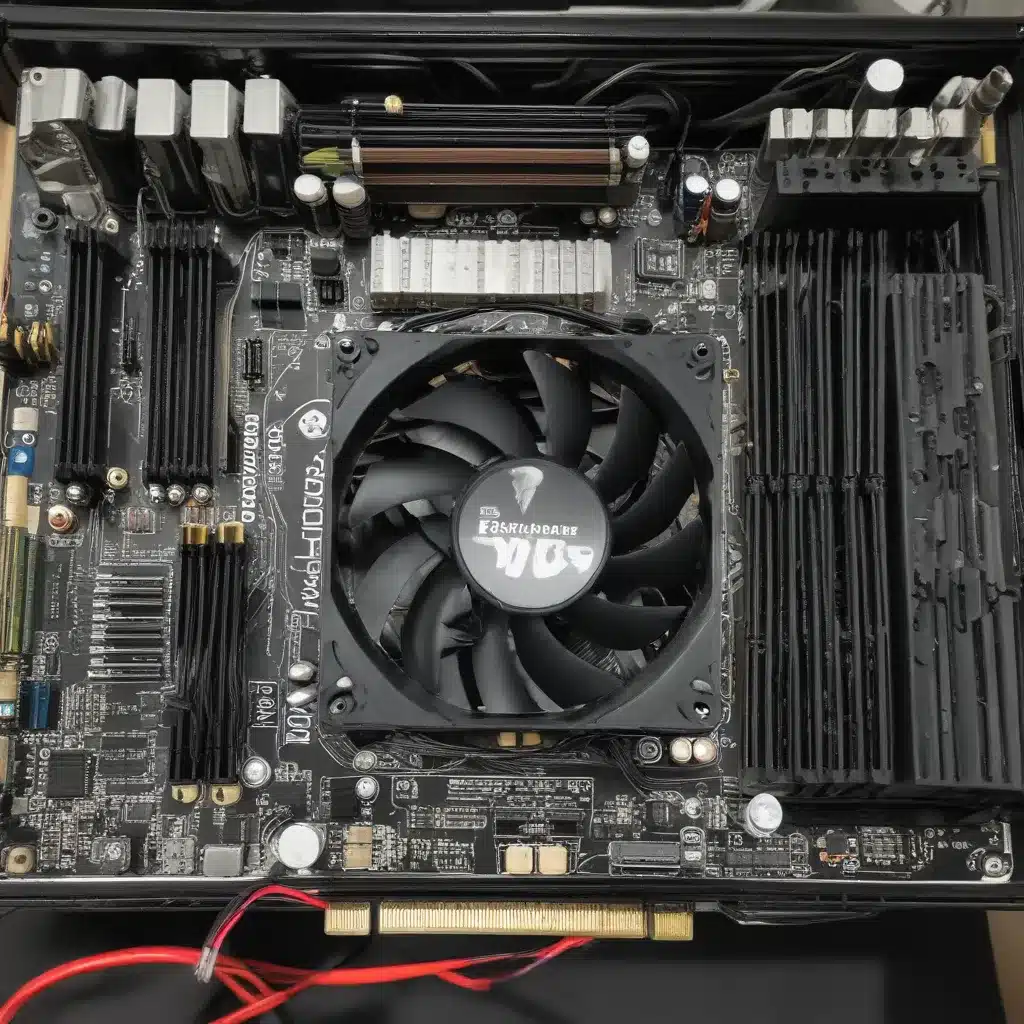
As a seasoned IT professional, I’ve helped countless clients breathe new life into their aging desktop computers. One of the most effective and cost-efficient upgrades is swapping out an old graphics card for a modern, high-performance GPU. In this comprehensive guide, I’ll walk you through the process of reviving an outdated desktop PC using a graphics card upgrade, covering everything from compatibility considerations to performance optimization.
Assessing Your Hardware
The first step in this journey is to take a close look at your existing desktop PC. Identify the key hardware components, such as the motherboard, processor, and current graphics solution. This information will be crucial in determining which graphics card upgrade will be the best fit.
Start by opening up the PC’s case and locating the key specifications. Make a note of the motherboard model, CPU type, and existing graphics card. If you’re unsure about any of these details, a simple system information tool like CPU-Z or Speccy can provide a comprehensive overview of your hardware.
Once you have this information, it’s time to start planning your graphics card upgrade.
Compatibility Considerations
When selecting a new graphics card, it’s essential to ensure compatibility with your existing hardware. Factors such as the PCIe slot type, power supply capacity, and physical dimensions of the card must be taken into account.
PCIe Slot Compatibility: Most modern desktop PCs use PCIe (Peripheral Component Interconnect Express) slots for graphics cards. Identify the version of PCIe supported by your motherboard, as this will determine the types of cards you can use. Common PCIe versions include PCIe 3.0 and PCIe 4.0.
Power Supply Compatibility: Graphics cards can be power-hungry, so you’ll need to ensure your power supply can handle the increased load. Check the recommended power supply wattage for your desired graphics card and compare it to your current unit’s capacity.
Physical Dimensions: Consider the physical size of the graphics card, including its length and height. Make sure there’s enough clearance inside your PC’s case to accommodate the new card without any interference.
Selecting the Right Graphics Card
With your hardware information in hand, it’s time to research and select the best graphics card upgrade for your system. There are a few key factors to consider:
Performance Requirements: Evaluate your current and future gaming or multimedia needs. Are you looking for a significant performance boost, or simply a slight upgrade? This will help you determine the appropriate GPU power level.
Budget: Graphics cards can range greatly in price, from budget-friendly options to high-end enthusiast-level cards. Set a realistic budget that balances your needs and your wallet.
Brand and Model: Popular GPU manufacturers include NVIDIA and AMD. Research reviews and benchmarks to find the best card for your needs and budget.
Once you’ve identified the ideal graphics card, make sure to double-check its compatibility with your system.
Installing the New Graphics Card
With your new graphics card in hand, it’s time to get to work. Begin by shutting down your desktop PC and unplugging the power cable. Then, follow these steps:
-
Remove the Old Graphics Card: Carefully disconnect any power cables connected to the existing graphics card. Then, locate the PCIe slot and release the locking tab to remove the card.
-
Install the New Graphics Card: Align the new graphics card with the PCIe slot and gently press it in until it’s securely seated. If necessary, use the PCIe slot’s locking tab to secure the card in place.
-
Connect the Power Cables: Locate the appropriate power connectors on your new graphics card (usually 6-pin or 8-pin PCIe power) and connect them to your power supply.
-
Secure the Card: Ensure the graphics card is properly secured in the PCIe slot and that any mounting screws are tightened.
-
Close the PC Case: Carefully close the PC case and reconnect the power cable.
Configuring the Graphics Card
With the new graphics card installed, it’s time to configure it for optimal performance. Here are the steps:
-
Install the Drivers: Visit the manufacturer’s website (NVIDIA or AMD) and download the latest drivers for your specific graphics card model. Follow the on-screen instructions to install the drivers.
-
Update the BIOS: If your motherboard supports a newer BIOS version, consider updating it to ensure compatibility with your new graphics card.
-
Adjust Power Settings: In your operating system’s power management settings, ensure the graphics card is set to “High Performance” mode for maximum efficiency.
-
Monitor Temperatures: Keep an eye on your graphics card’s temperatures, especially during intense gaming or multimedia sessions. Consider adding additional case fans or upgrading your CPU cooler if temperatures become a concern.
Evaluating Performance
After completing the installation and configuration, it’s time to test the performance of your revived desktop PC. Run some benchmark software, such as 3DMark or UserBenchmark, to get a clear picture of the system’s capabilities.
Compare the benchmark results to your previous setup or online performance data for similar configurations. This will give you a good sense of the performance gains achieved through the graphics card upgrade.
Extending the Lifespan of Your Desktop
By upgrading the graphics card, you’ve breathed new life into your aging desktop PC. This cost-effective solution can provide a significant performance boost, allowing you to enjoy modern games, content creation, and other demanding applications for years to come.
Remember, regular maintenance, such as cleaning the internal components and managing thermals, can further extend the lifespan of your revived desktop. Considering the current global chip shortage and rising hardware prices, a graphics card upgrade is an excellent way to get more value out of your existing PC setup.
For more information on optimizing your desktop’s performance or exploring other IT solutions, be sure to check out IT Fix. Our team of experts is always here to help you get the most out of your technology.












